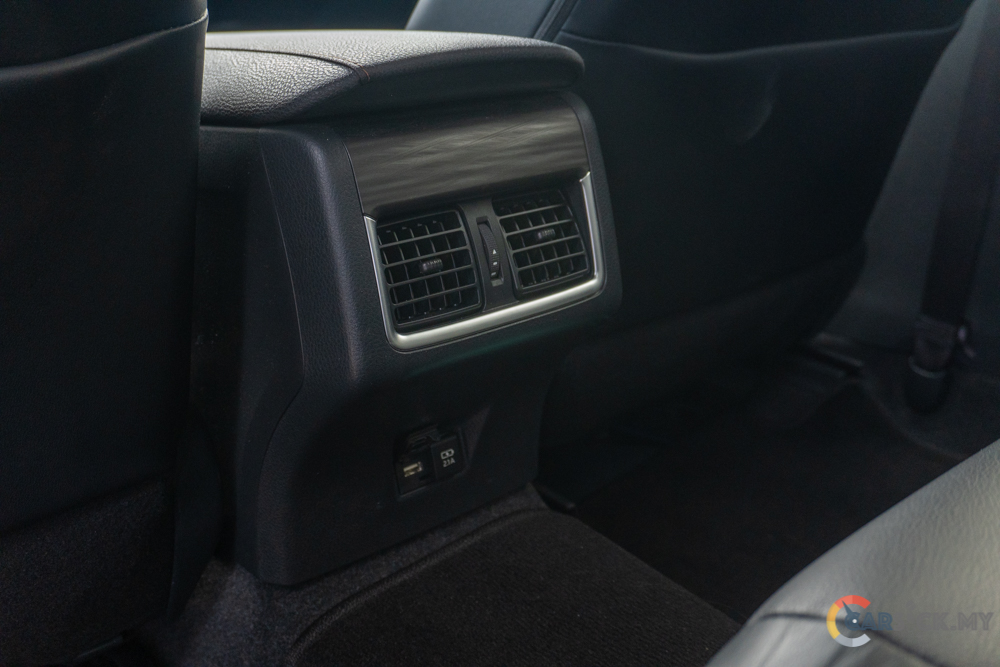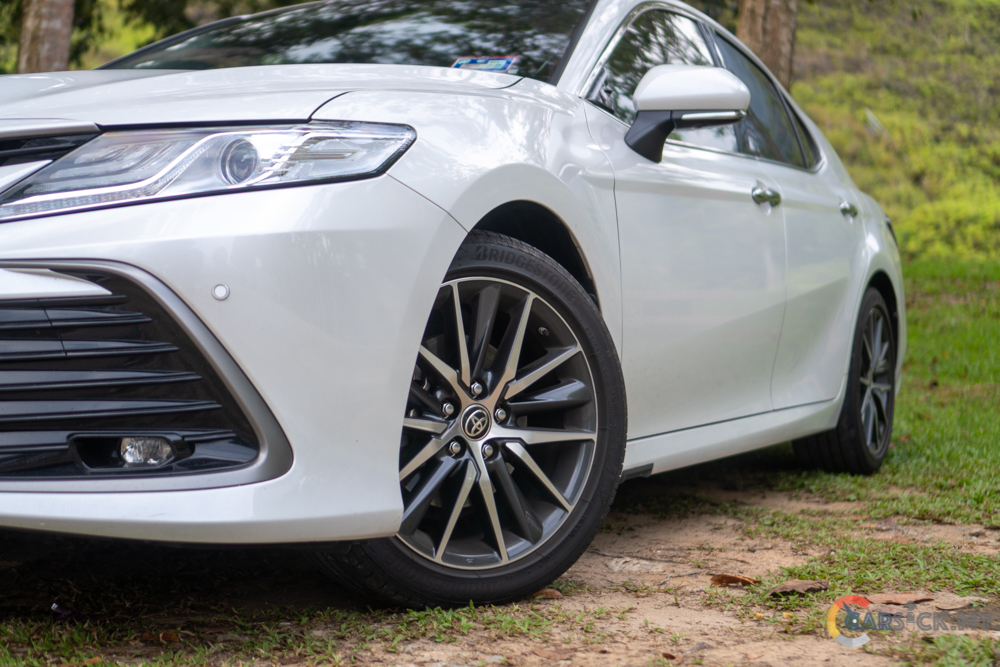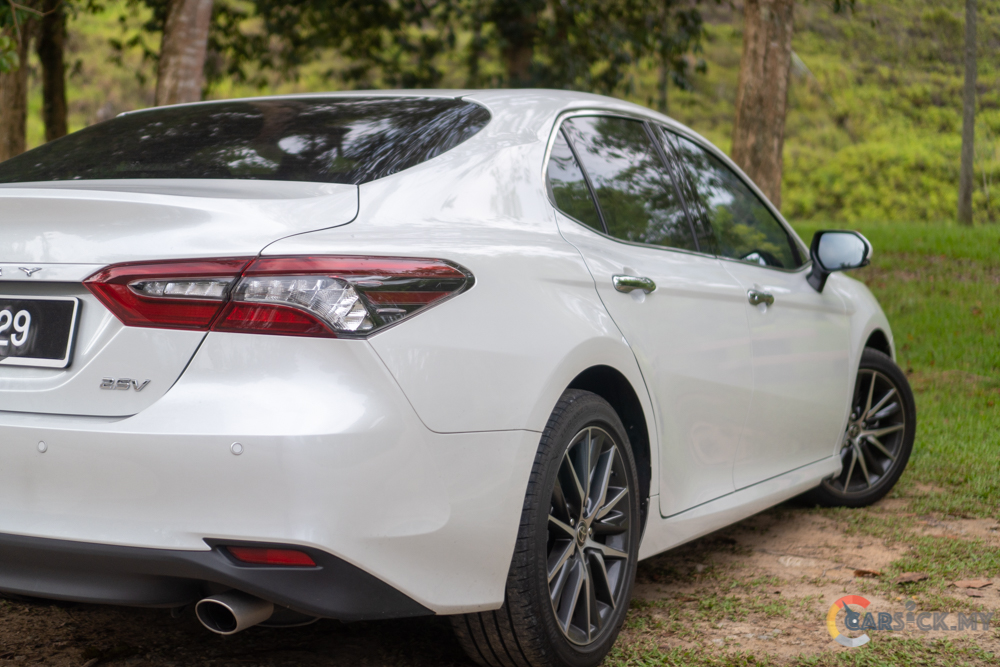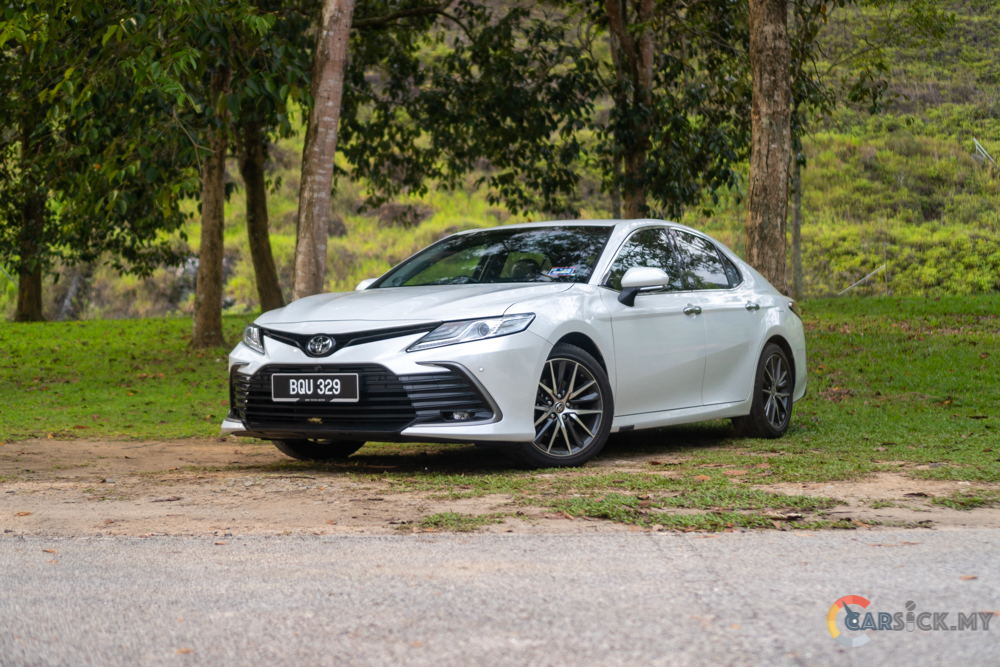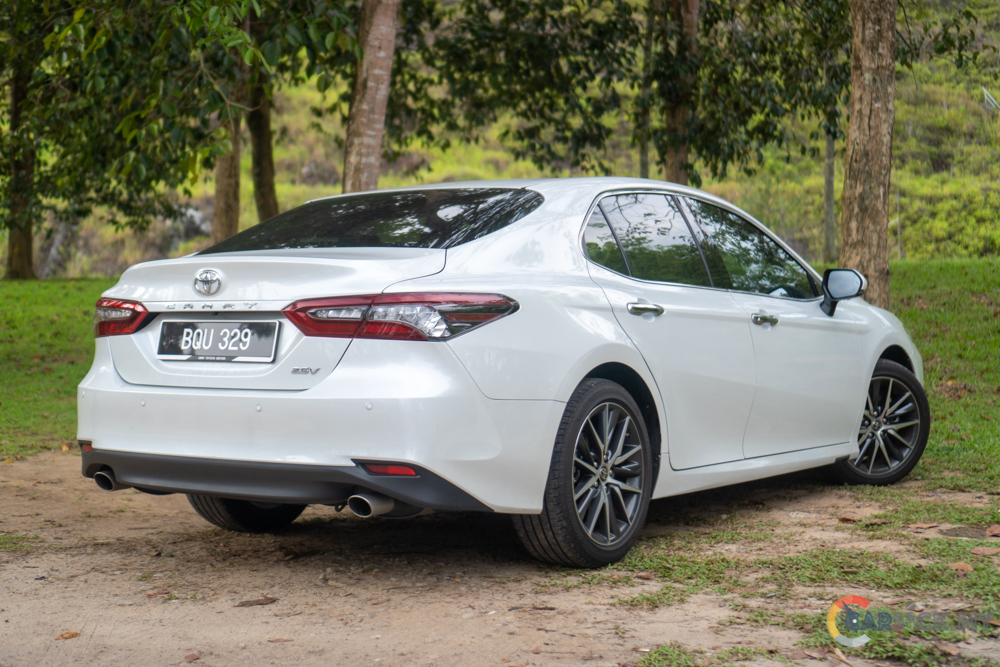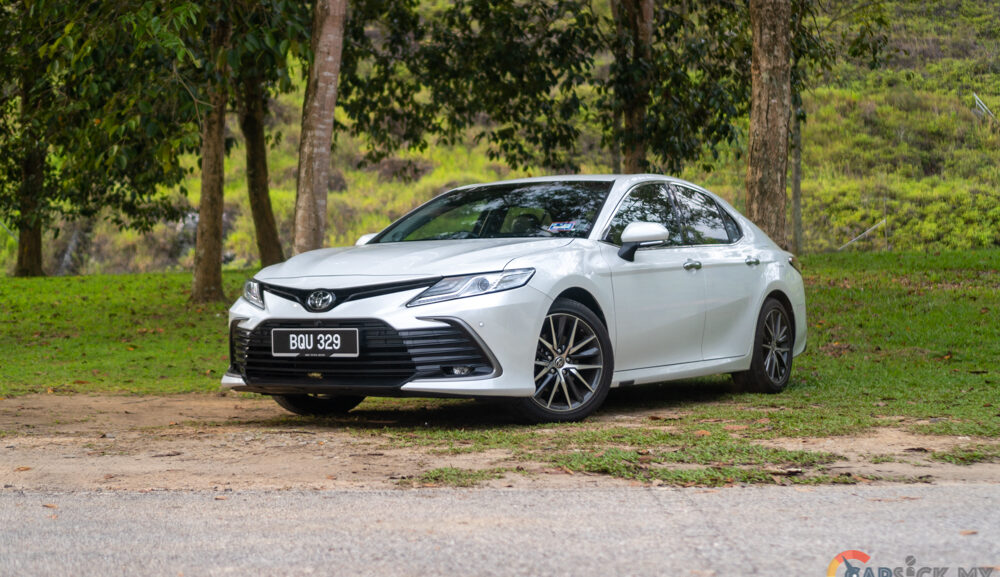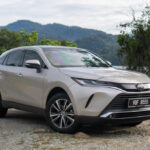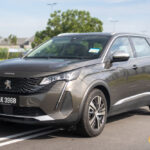In Malaysia, we always had the perception that the Toyota Camry is mostly owned by middle aged men. This is also the same reason that the Camry has been called an uncle car by many Malaysians. In recent times, Toyota has been busy changing their image from producing reliable boring cars to making reliable fun cars. This time round, I’ll check out the latest generation Toyota Camry, and see whether Toyota manages to turn the Camry into a fun car to drive.
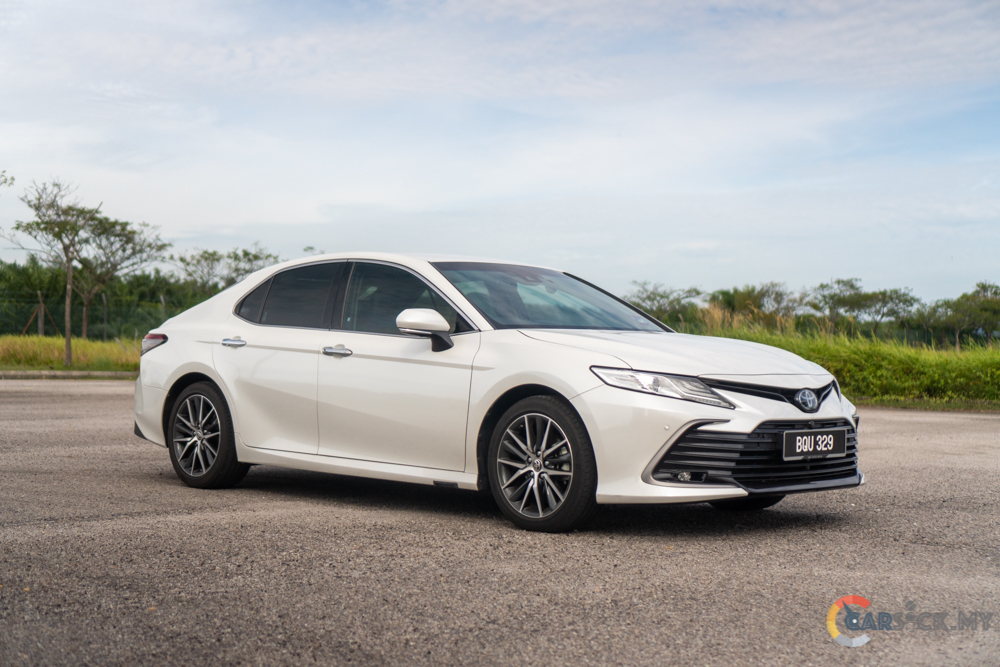
 For the latest generation Camry, Toyota has given the D-segment sedan a sleek and sporty profile. This is achieved by making the latest generation Camry lower and wider than before. On the 2022 model, some minor changes have been done to the Camry to freshen up the looks of the vehicle. These changes are relatively small, and it requires an eagle eye to spot the differences. Starting from the front, the air intake slats on the front bumper have now been painted in gloss black, which replaces the dark gray color found on the pre-facelift car.
For the latest generation Camry, Toyota has given the D-segment sedan a sleek and sporty profile. This is achieved by making the latest generation Camry lower and wider than before. On the 2022 model, some minor changes have been done to the Camry to freshen up the looks of the vehicle. These changes are relatively small, and it requires an eagle eye to spot the differences. Starting from the front, the air intake slats on the front bumper have now been painted in gloss black, which replaces the dark gray color found on the pre-facelift car. 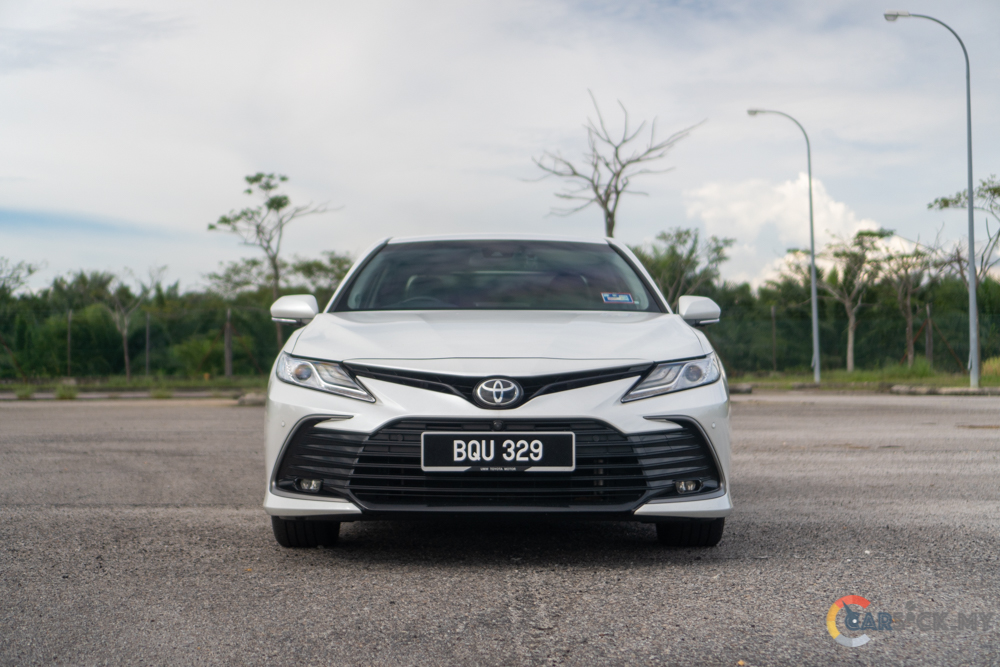
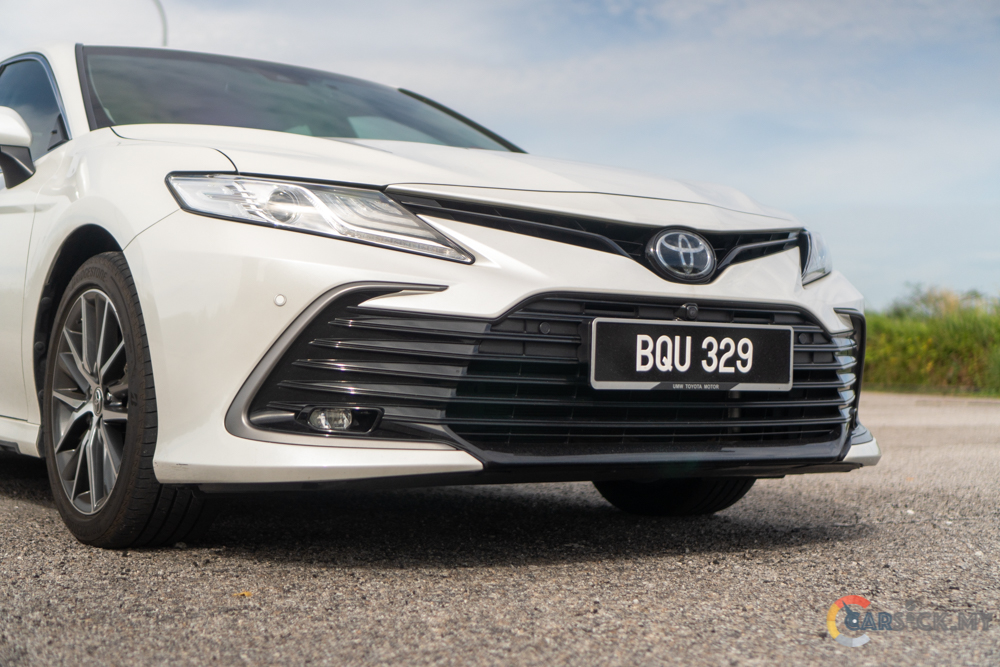
At the rear, Toyota has done some minor graphical changes to the taillights for the updated Camry. Apart from that, everything else back there stays pretty similar to the pre-facelift vehicle. Just like the pre-facelift car, the updated Camry continues to use full LED headlights and taillights to provide illumination. And finally, the updated Camry now comes with a new set of 18-inch rims that matches the looks of the vehicle. Wrapped in 235/45 R18 tyres, this set of rims are finished in gun metal gray with a diamond cut surface to give it a sporty look. 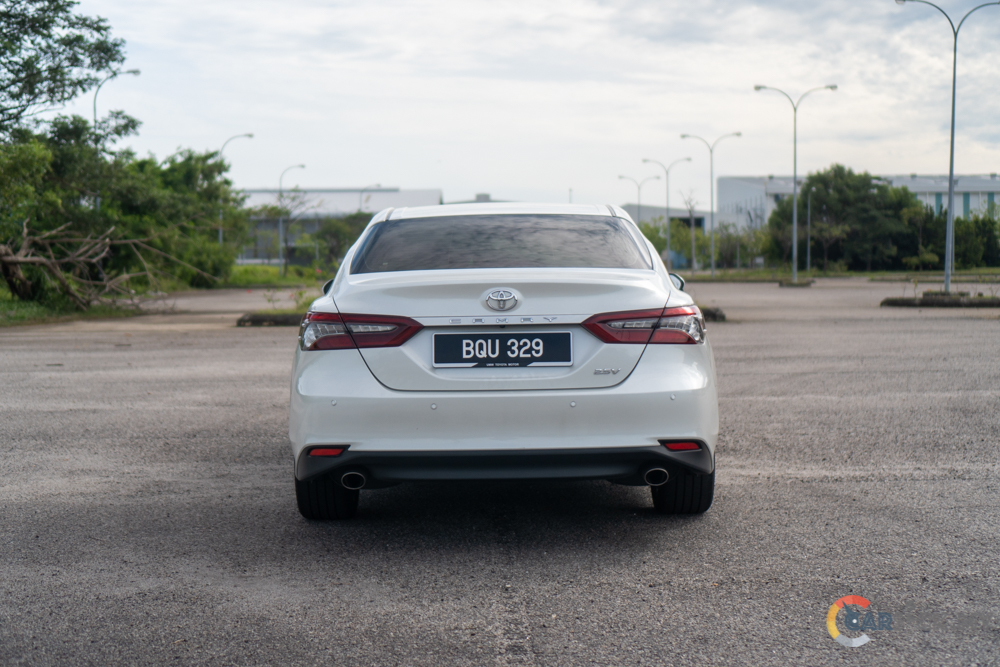
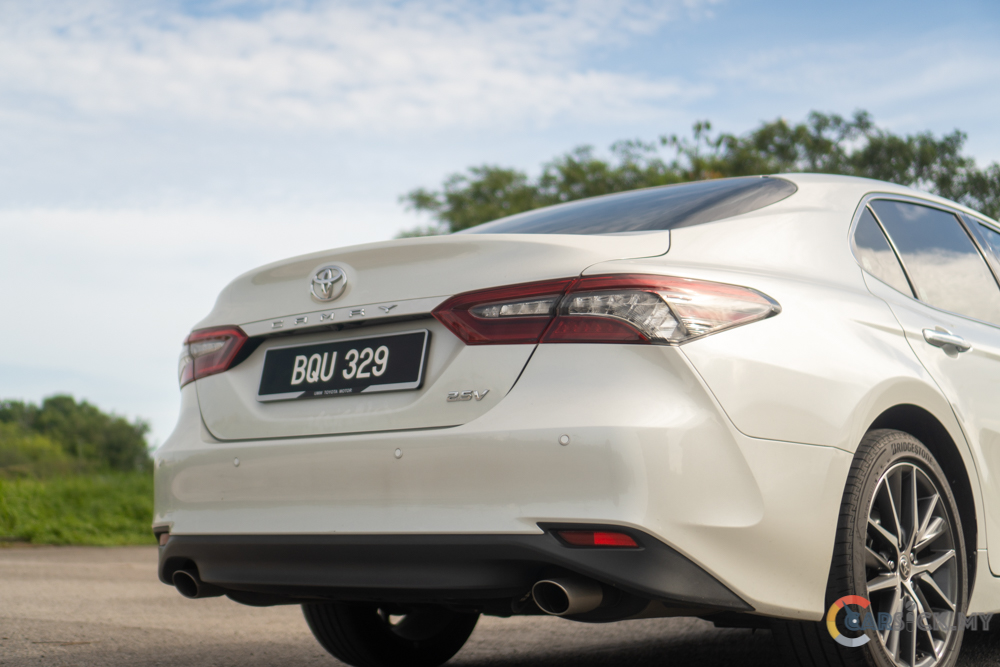
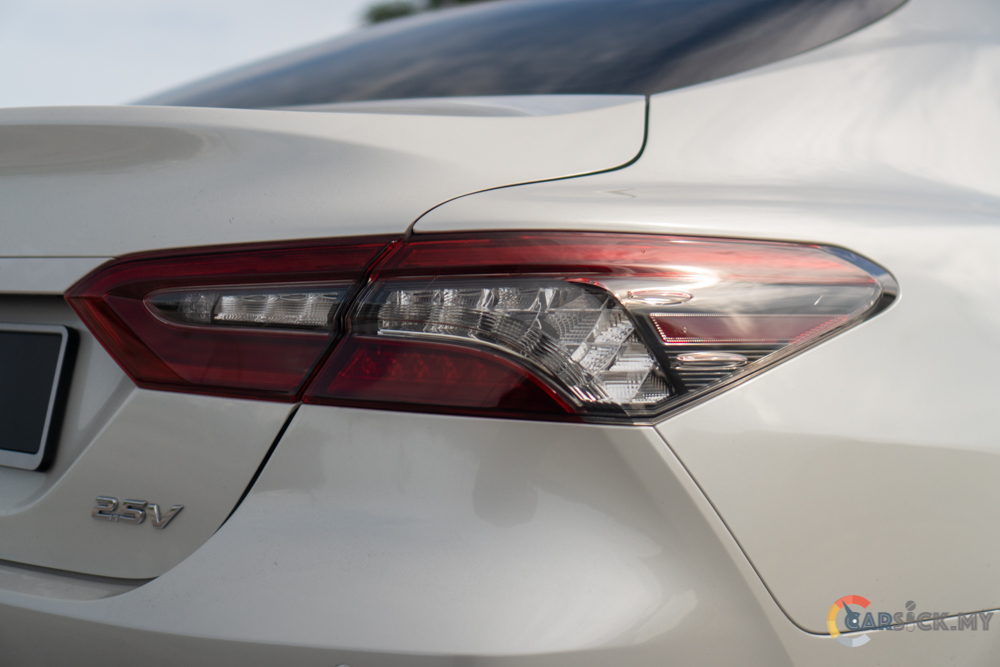
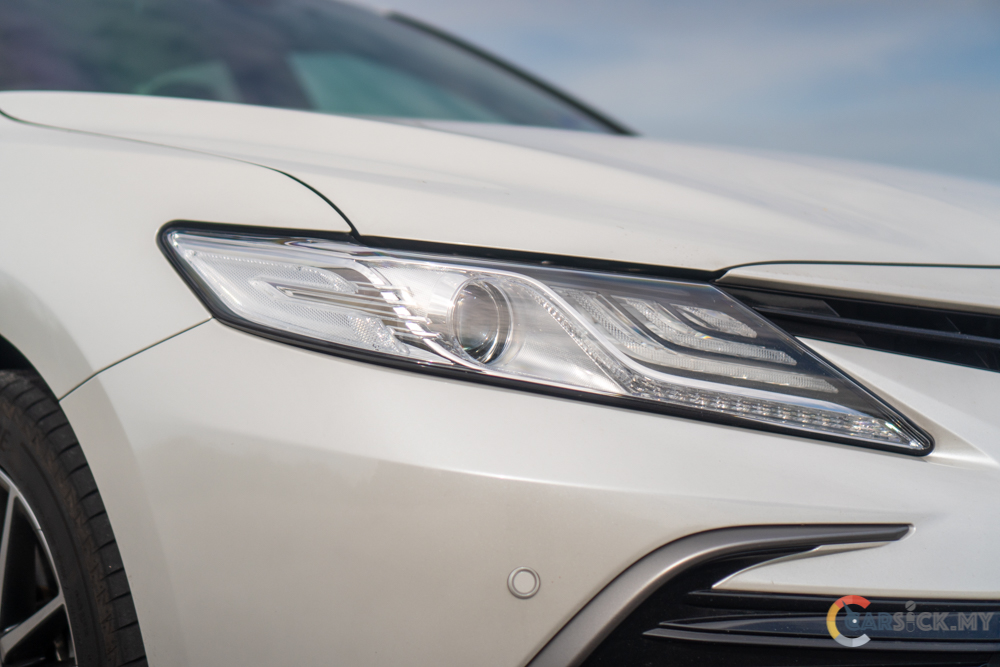

Right before I got the keys to the Camry, I was reviewing Toyota’s luxury SUV, the Toyota Harrier. When I stepped on board the Camry, the interior felt familiar instantly as it somewhat resembles the interior of the Harrier. While the interior may not be as plush as the Harrier, it’s still a very solid interior with most of the touch points being covered in soft touch materials. For the 2022 update, the Camry interior now looks even more sportier than before, as the brown color wood trims have been replaced with black color ones. 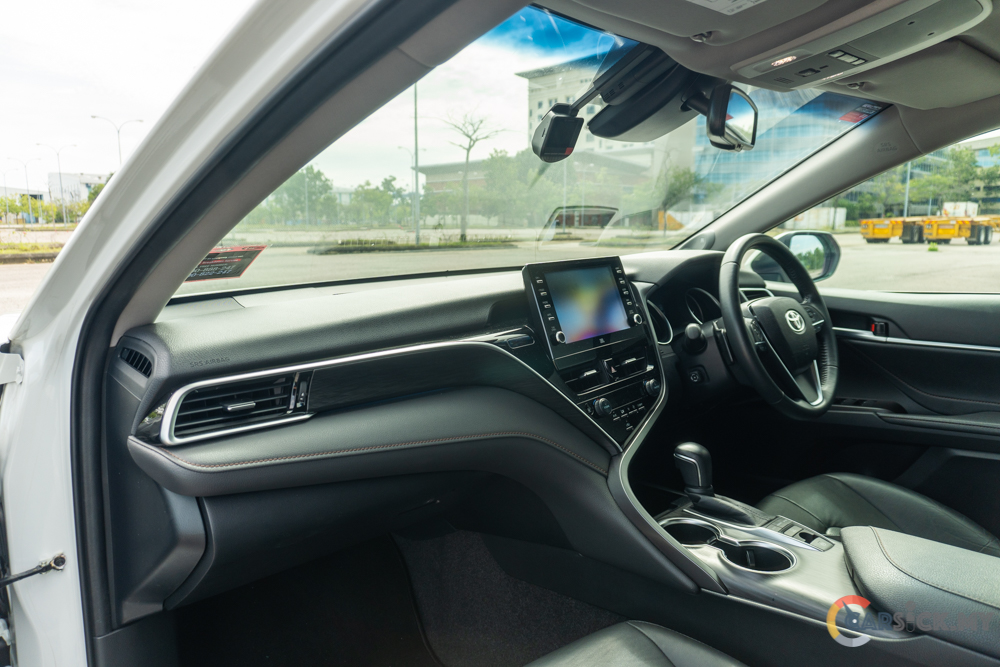
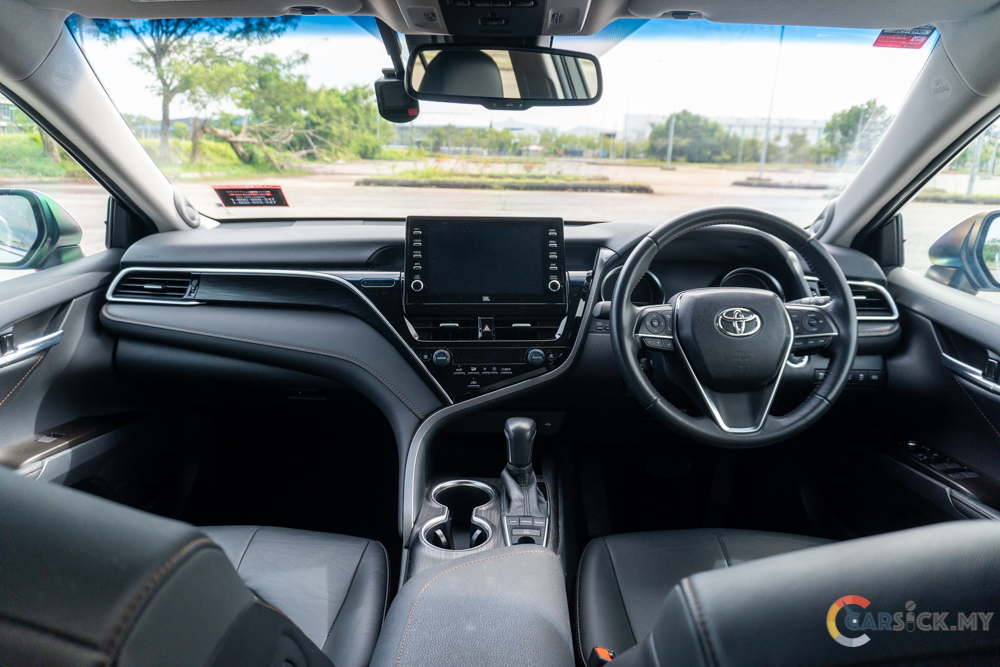
Just like the Harrier, the instrument cluster on the Camry is also an analogue unit with a 7-inch multi-information display sitting in the center. While it may not look as posh as the one found on the Harrier, it still has all the basic functions that an instrument cluster should have, and it’s easy to read. And at the center of the dashboard, sits a 9-inch infotainment screen that comes with connectivity functions such as Android Auto and Apple Carplay. The infotainment system is hooked up to a 9-speaker JBL premium sound system, which sounded sharp and clear with a good amount of bass. 

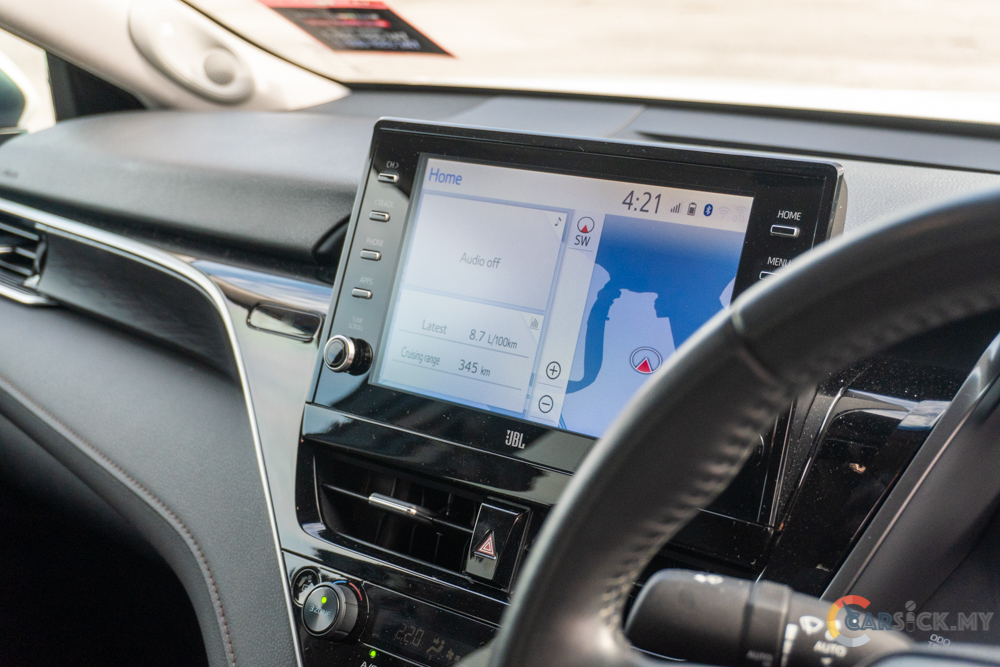
Sitting in the driver seat, it’s very easy to get into a proper driving position. The driver seat is very comfortable, and it has enough support to keep me in place when driving on twisty roads. Both front seats are electrically adjustable, and there is a boss switch to allow the driver or rear passengers to adjust the front passenger seat when needed. And as for the rear seats, I don’t think anyone will have any complaints when they have to sit in the back. When I’m seated behind myself, I still get a decent amount of headroom and legroom back there to feel comfortable even on long journeys. 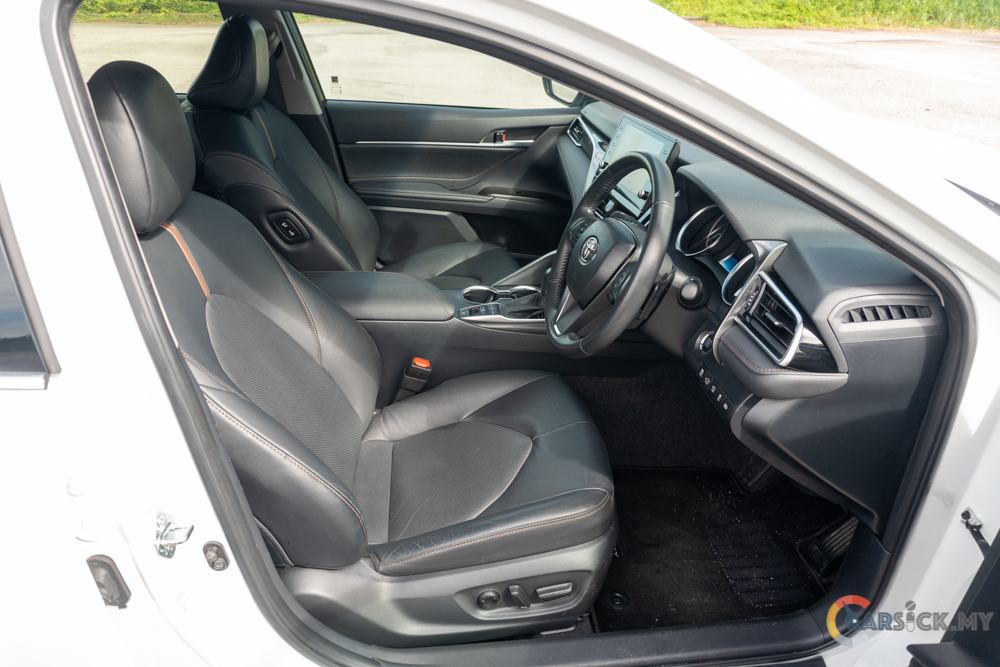
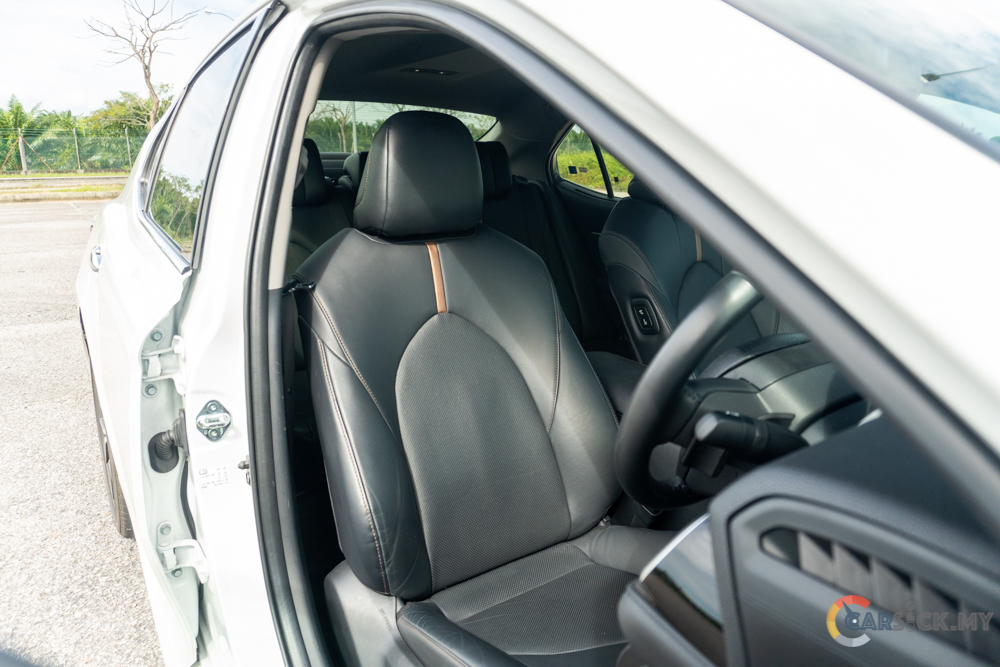
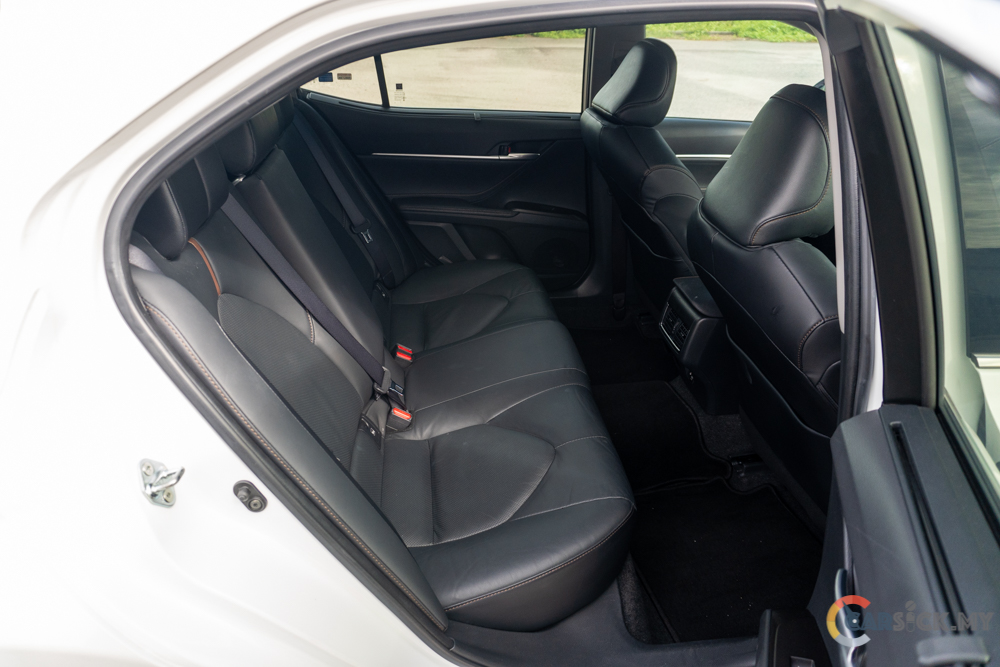
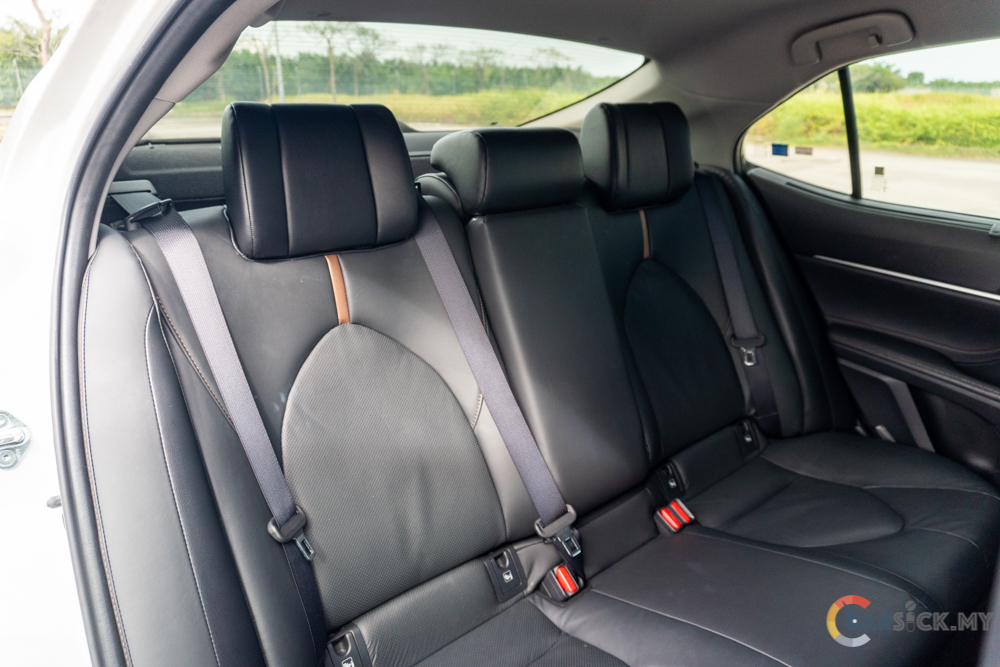
As some companies use the Camry to fetch their VIPs around, Toyota did put in some effort to make the rear seats as comfortable as possible. The rear seats have the ability to recline electrically, and it can be adjusted through a control panel that is integrated into the center armrest. Apart from the seat recliner, this control panel also allows the rear passengers to adjust the rear climate zone, the radio, and the rear sunshade. While the rear sunshade is electrically powered, both rear doors also come with manual sunshade to block out the sun. For a D-segment sedan, the 495L boot capacity is not the largest in its class, but it’s fairly usable for most vehicle buyers. The boot space is also not extendable as the rear seats could not be folded down. 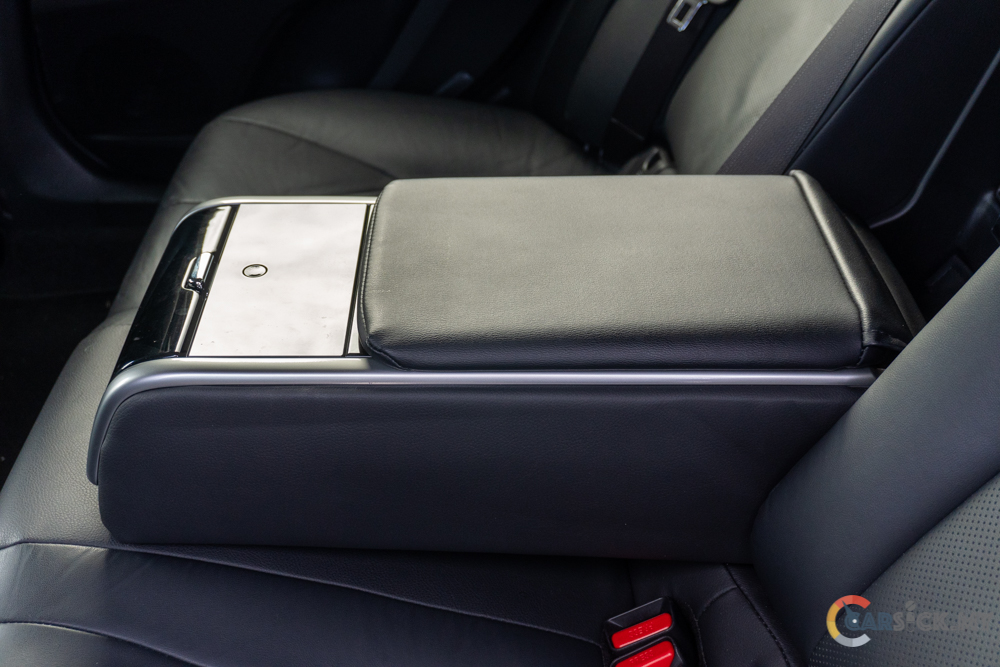
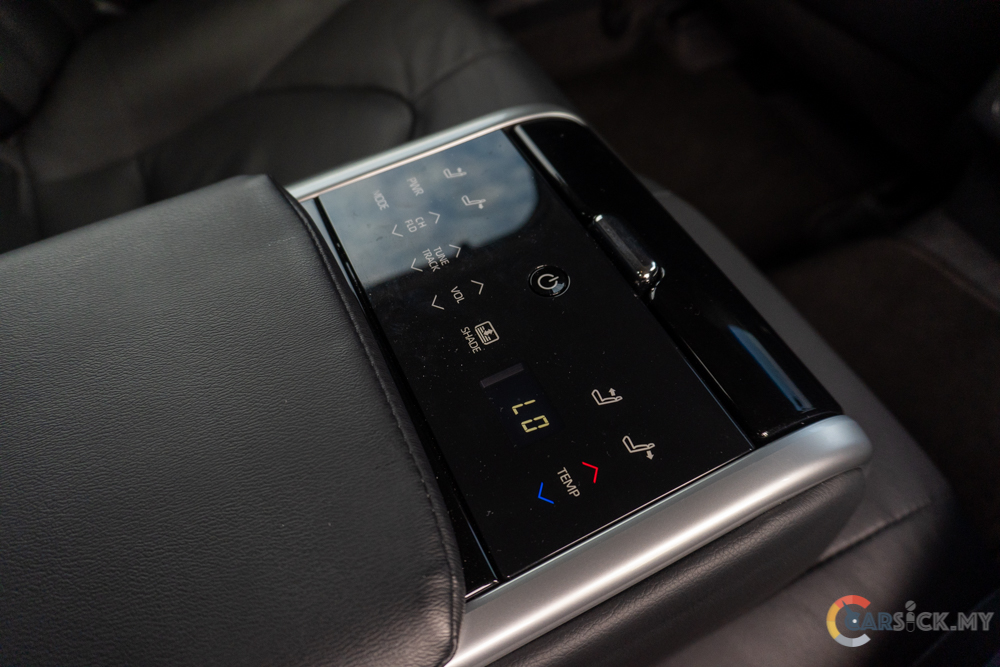
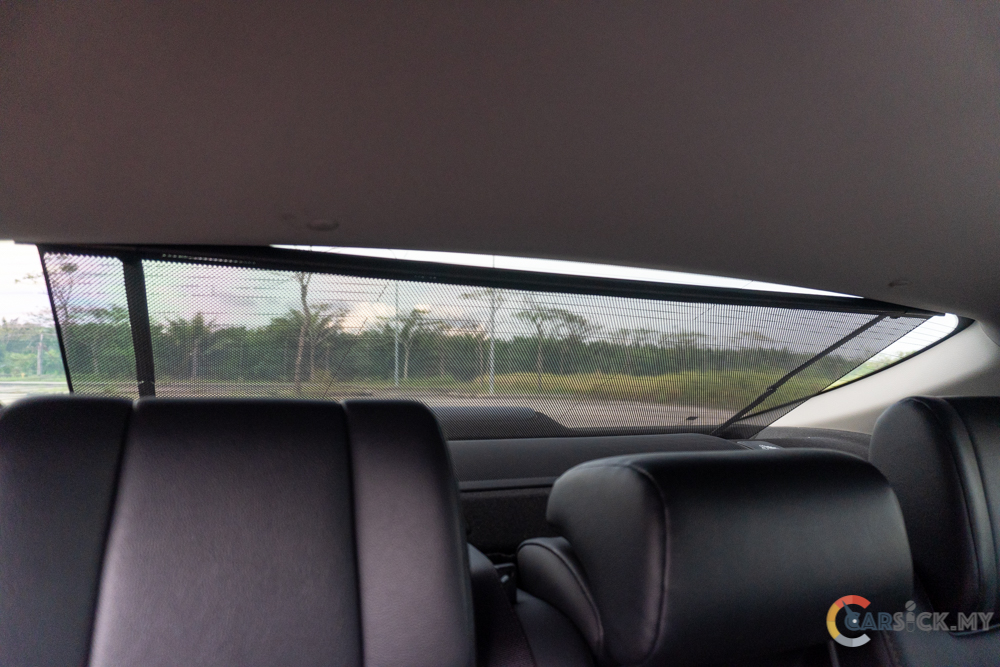
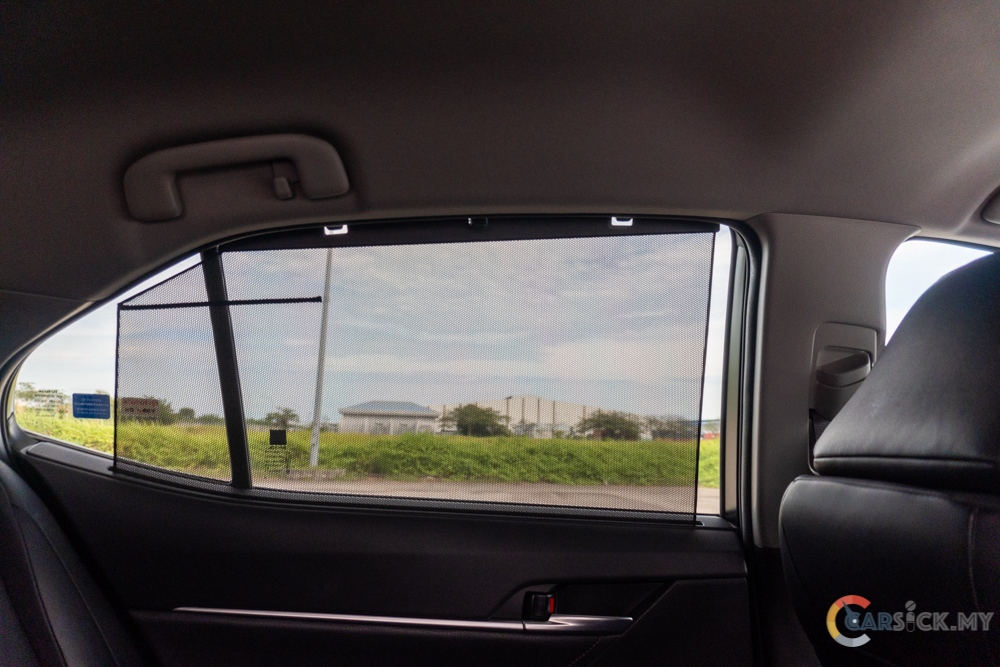
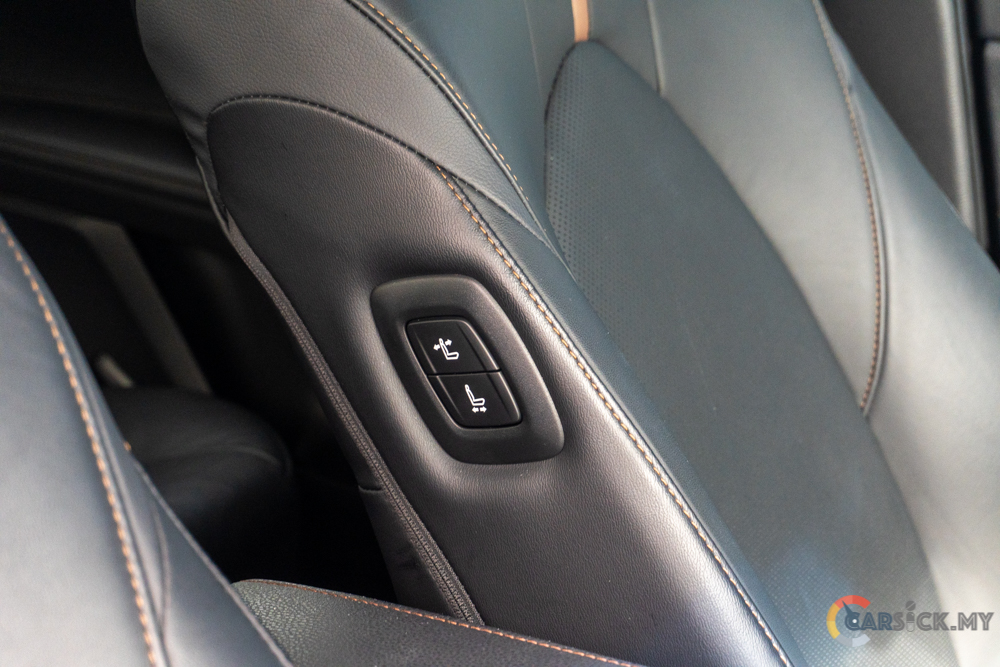
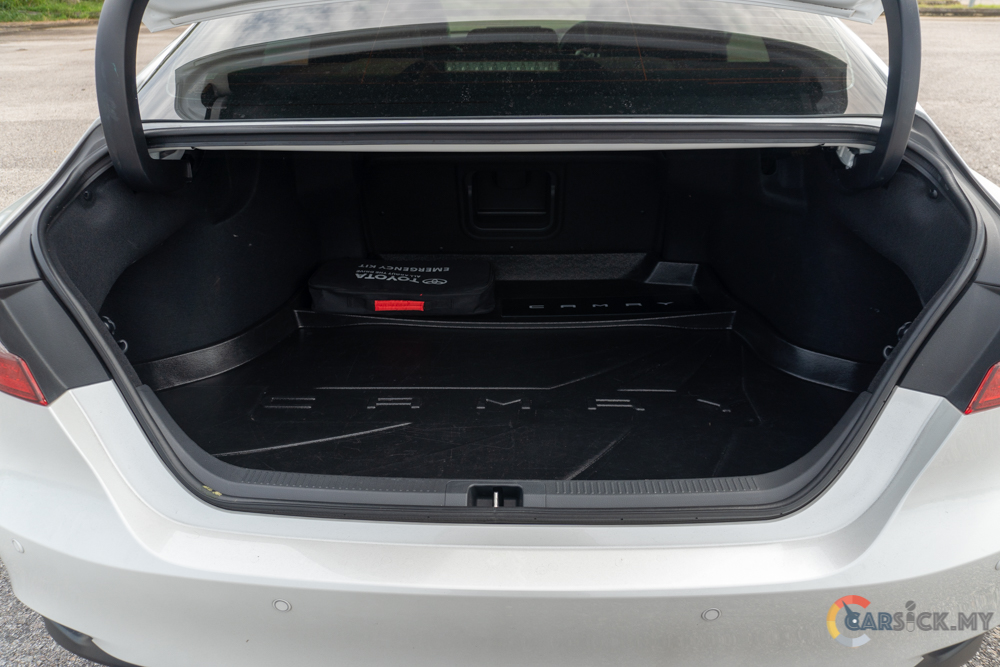

While the exterior and interior changes are minor, the major upgrade that the Camry receives is in the form of a brand new powertrain. The Camry now gets the new 2.5L naturally aspirated dynamic force engine, which was intended for the Camry from the get go. On top of that, the transmission has also been upgraded to an 8-speed automatic transmission. This engine has the ability to produce a healthy 209PS at 6,600rpm, and a peak torque of 253Nm at 5,000rpm. 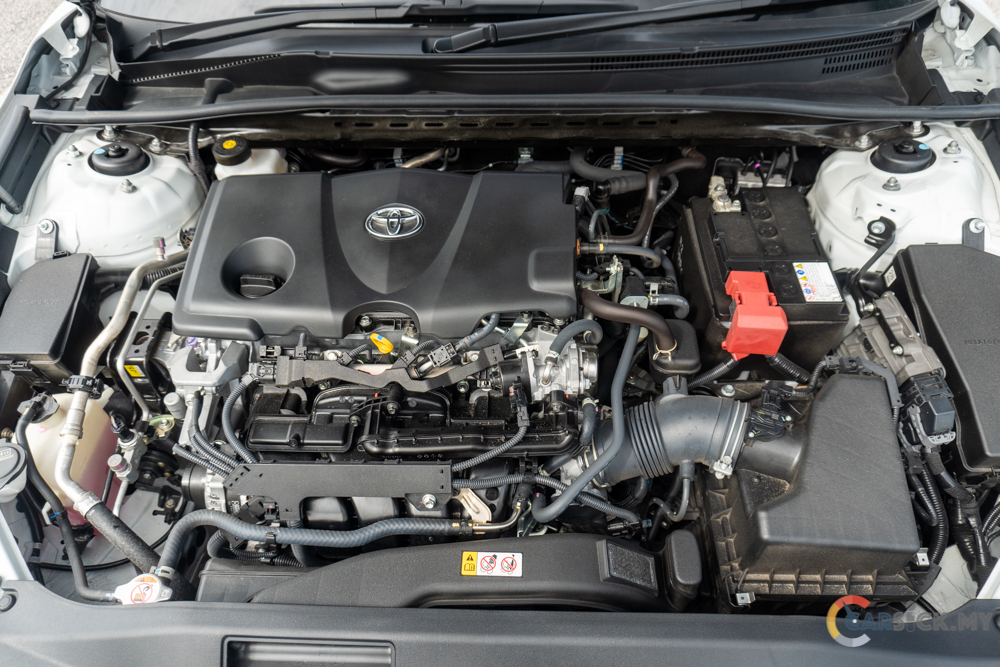
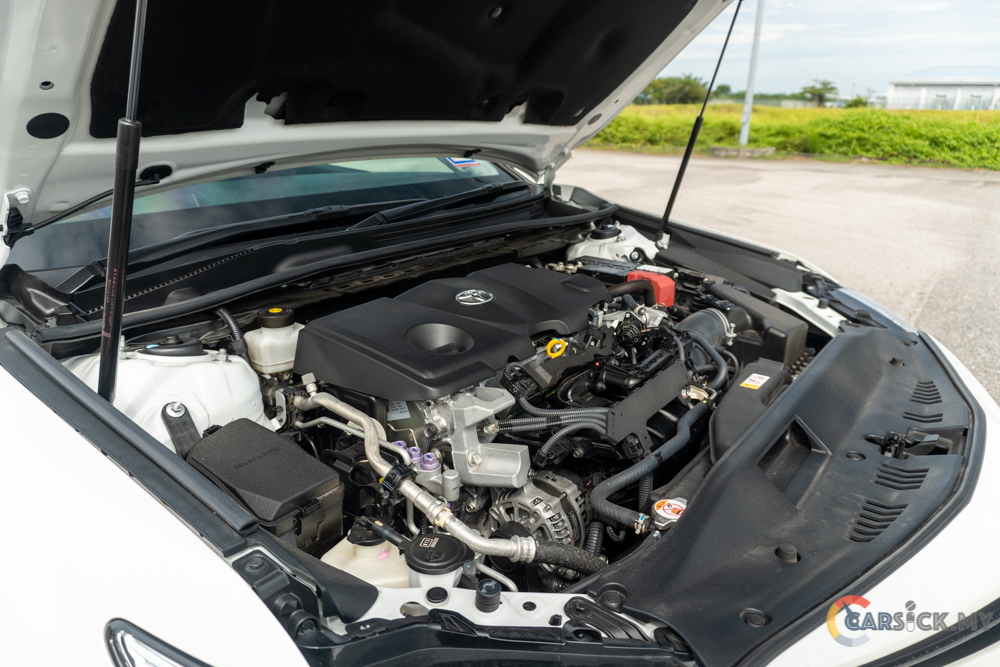
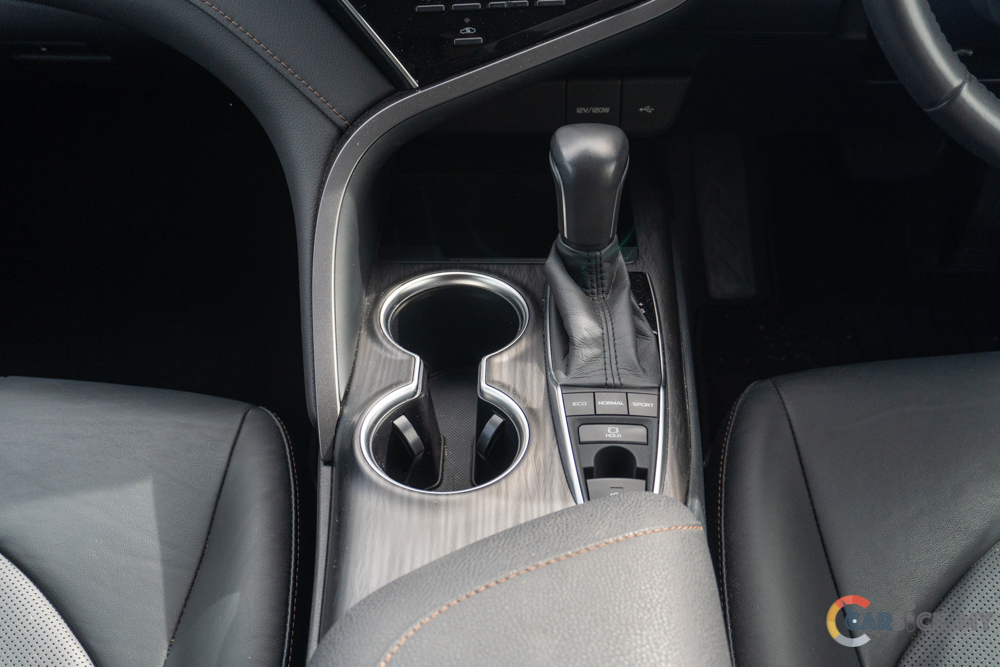
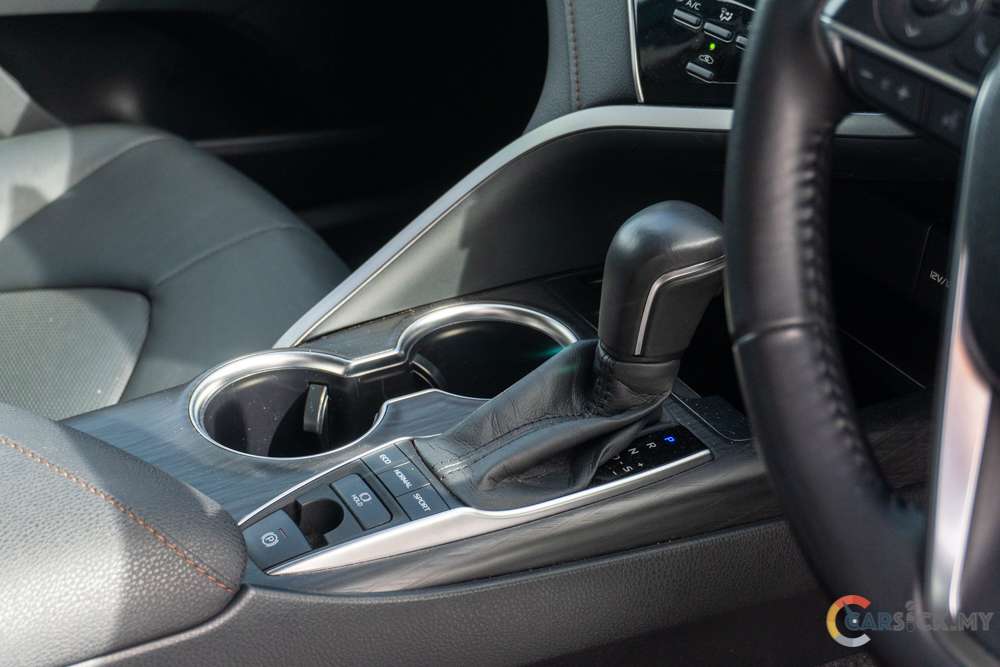
With this new powertrain, the Camry’s performance has also been improved for better drivability. At lower RPM, this engine has strong low end torque to help the driver to drive the car as smoothly as possible. As the engine goes into higher RPM, I can feel the additional horsepower and torque that the dynamic force engine can produce. With the additional performance, it also increases the driver’s confidence level when overtaking another vehicle on a single carriageway.
Paired with this new 8-speed automatic transmission, the Camry drives even smoother than before. The new transmission changes gears in a very smooth manner, and it’s always in the right gear at the right moment. The transmission is so smooth that I can barely feel the gear change when I’m driving the Camry. By adding 2 additional gear ratios, the transmission not only provided better acceleration, it also helped out on the engine’s fuel efficiency. For a 2.5L engine, the fuel efficiency is on par with a modern day 2.0L turbocharged engine, which is really impressive.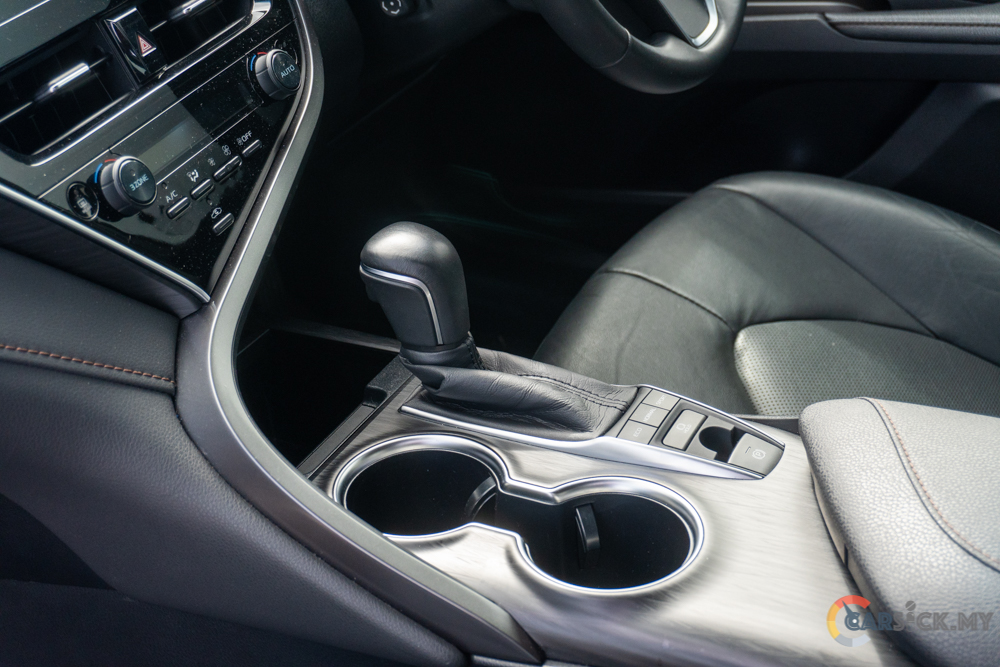
Just like the pre-facelift car, the facelifted Camry continues to be built on the famous TNGA platform. The TNGA platform turned the Camry into a very capable vehicle in tackling the twisty roads, where it keeps the car as flat as possible when taking corners. The chassis is stiff, and I can feel that this chassis can handle even more power than the 2.5L dynamic force engine can produce. On top of that, the suspension is also very well tuned, and just like the Harrier, it strikes a good balance between comfort and handling.
To me, one of the highlights of a TNGA vehicle is the steering system. The steering wheel feels precise, and it provided sufficient feedback from the front wheels. Brakes wise, the all wheel disc brakes do provide decent braking performance to slow the car down. And as for the safety systems, the Camry is fitted with a long list of safety and driver assistance systems. The safety systems available on the Camry include 7 Airbags, Vehicle Stability Control (VSC), Anti-lock Braking System (ABS), Emergency Stop Signal (ESS), Traction Control (TRC), and Hill-start Assist Control (HAC). As for the driver assistance systems, the Camry is equipped with Pre-Crash System (PCS), Lane Departure Alert (LDA), Lane Keeping Assist (LKA), Lane Tracing Assist (LTA), Dynamic Radar Cruise Control (DRCC), Adaptive High-beam System (AHS), Blind Spot Monitor (BSM), Tyre Pressure Monitoring System (TPMS), and Rear Cross Traffic Auto Brake (RCTAB).
For a price tag of RM 209,800.00, the Camry is not only a reliable vehicle, but it’s also a rather fun vehicle to drive. The latest Camry not only appeals to the matured audience, even younger car buyers will now have another reason to own the Camry. Due to the market shift, we get to see more Harriers on the road compared to this latest Camry. Let’s hope that Toyota would not stop making a fun Camry for those who didn’t want a SUV.
Check out full photo album here. 